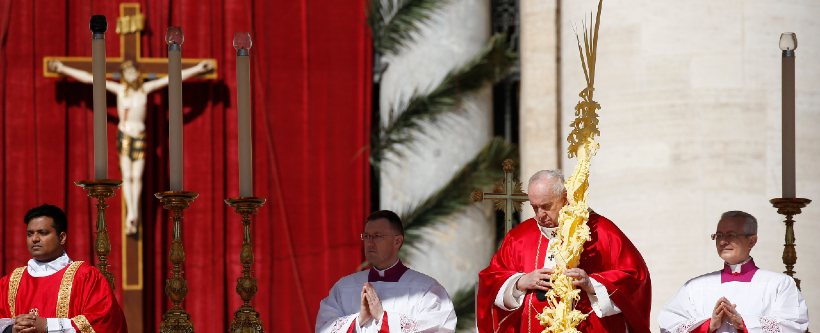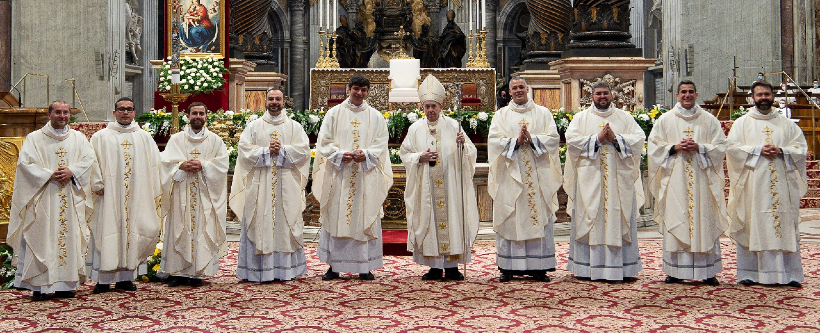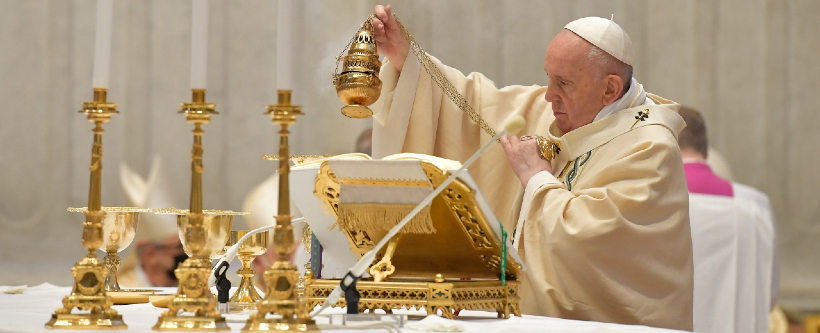An invitation to work for “the culture of encounter” in a simple way “as Jesus did”: not only seeing but looking, not only hearing but listening, not only passing by people but stopping with them, not only saying “what a shame, poor people!” but allowing yourself to be moved with compassion; “and then to draw near, to touch and to say: ‘Do not cry’ and to give at least one drop of life”.
Pope Francis used these words in his homily to describe the message contained in the liturgical readings of the Mass he celebrated in the Chapel of Casa Santa Marta on Tuesday morning, 13 September.
Focusing in particular on the scene of the widow of Nain, from the Gospel of Luke (7:11-17), the Pope highlighted how this passage from “the Word of God” speaks of “an encounter. There is an encounter between people, an encounter between people who were in the street”. And this, he commented, is “something that is not normal”. In fact, “when we go into the street, every man thinks of himself: he sees, but does not look; he hears, but does not listen”; in short, everyone goes their own way. And consequently “people pass by each other, but they do not encounter each other”. Because, he clarified, “an encounter is something else” entirely, and that is “what the Gospel today proclaims to us: an encounter between a man and a woman, between an only son who is alive and an only son who is dead; between a happy group of people — happy because they have encountered Jesus and followed him — and a group of people who cry as they accompany the woman”, who was left a widow and went to bury her only son.
“The Gospel says: ‘When the Lord saw her, he was moved with great compassion’”. In this regard, the Pope pointed out that it is not “the first time” the Gospel speaks of Christ’s compassion. “When Jesus saw the crowds, on the day of the multiplication of the loaves”, he was also seized with great compassion, the Pope said, “and before the tomb of his friend Lazarus, he wept”.
This compassion, the Pope warned, is not the same as what we normally feel “when, for example, we go out into the street and see something sad: ‘What a shame!’”. After all, “Jesus did not say: ‘What a poor woman!’”. On the contrary, “he went further. He was seized with compassion.
‘And he drew near and spoke to her. He told her: Do not cry’”. In this way, “Jesus, with his compassion, involves himself with that woman’s problem. ‘He drew near, he spoke to her and he touched’.
The Gospel says that he touched the coffin. Surely, however, when he said ‘do not cry’, he touched the widow as well. An embrace. Because Jesus was moved. And then he performs the miracle: that is, He raises the man to life.
Thus the Pope pointed out an analogy: “The only son who was dead resembles Jesus, and he transforms into an only son who is alive, like Jesus. And Jesus’ action truly shows the tenderness of an encounter, and not only the tenderness, but the fruitfulness of an encounter. ‘The dead man sat up and began to speak, and Jesus returned him to his mother’. He did not say: ‘The miracle is done’. No, he said: ‘Come, take him, he is yours’”. That is why “every encounter is fruitful. Each encounter returns people and things to their place”.
This speech also reaches out to the people of today, who are far too “used to a culture of indifference” and who therefore need to “work and ask for the grace to build a culture of encounter, of this fruitful encounter, this encounter that returns to each person their dignity as children of God, the dignity of living”. We “are used to this indifference”, the Pope said, whether it be “when we see the calamities of this world” or when faced with the “little things”. We limit ourselves to saying: “Oh, what a shame, poor people, they suffer so much”, and then we move on. Pope Francis explained that an encounter, however, is different: “If I do not look, — seeing is not sufficient, no: to look — if I do not stop, if I do not look, if I do not touch, if I do not speak, I cannot create an encounter and I cannot help to create a culture of encounter”.
Describing the Gospel scene further, the Pope highlighted that at seeing the miracle that Jesus performed, “people were seized by fear and glorified God. And I like to see here too”, the Pope explained, “the day-to-day encounter between Jesus and his bride, the Church, who awaits his return. And every time that Jesus finds pain, a sinner, a person in the street, He looks at them, He speaks to them, He returns to his bride”. Therefore, “this is the message of today: Jesus’ encounter with his people; the encounter of Jesus who serves, who helps, who is the servant, who abases himself, who is compassionate with all those in need”. “When we say ‘those in need’ we not only think of the homeless”, but also “of we ourselves, who are in need”, Pope Francis said, “in need of Jesus’ words, of his embrace — and also that of those who dear to us”. Offering a concrete example, the Pope described the image of a family gathered at table: “so often people eat while watching TV or writing messages on their phones. Each person is indifferent to that encounter. Even right there at the core of society, which is the family, there is no encounter”, he said. Hence the final exhortation “to work for the culture of encounter, in a simply way, as Jesus did”.

 “The Gospel says: ‘When the Lord saw her, he was moved with great compassion’”. In this regard, the Pope pointed out that it is not “the first time” the Gospel speaks of Christ’s compassion. “When Jesus saw the crowds, on the day of the multiplication of the loaves”, he was also seized with great compassion, the Pope said, “and before the tomb of his friend Lazarus, he wept”.
“The Gospel says: ‘When the Lord saw her, he was moved with great compassion’”. In this regard, the Pope pointed out that it is not “the first time” the Gospel speaks of Christ’s compassion. “When Jesus saw the crowds, on the day of the multiplication of the loaves”, he was also seized with great compassion, the Pope said, “and before the tomb of his friend Lazarus, he wept”.




Facebook Comments